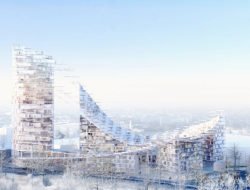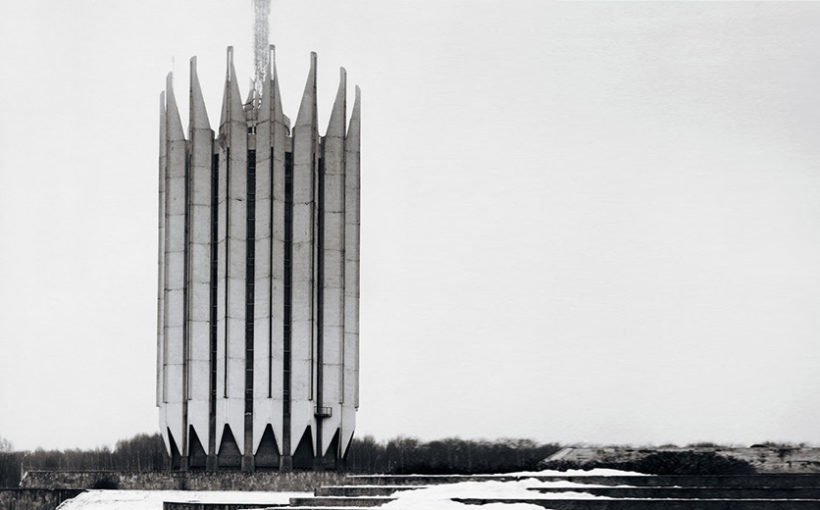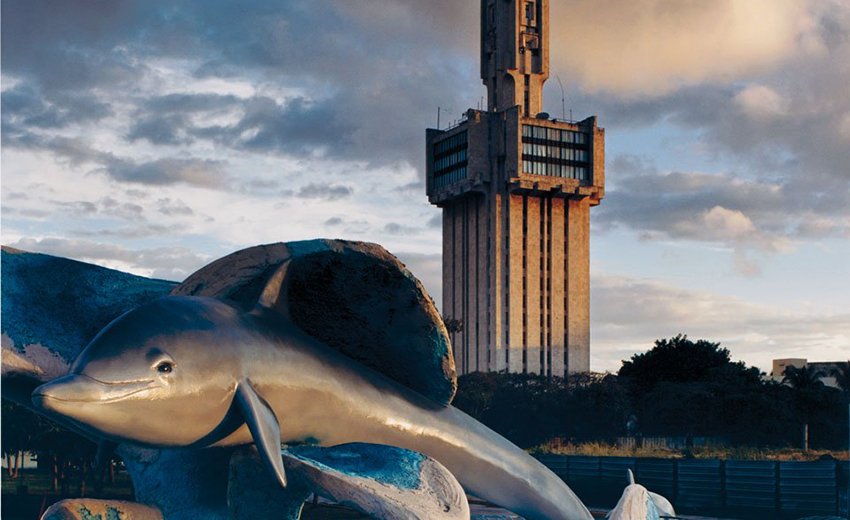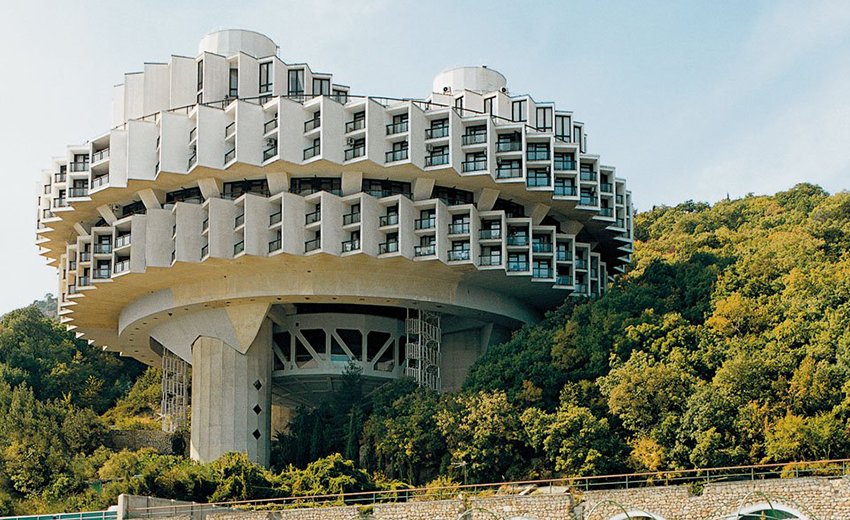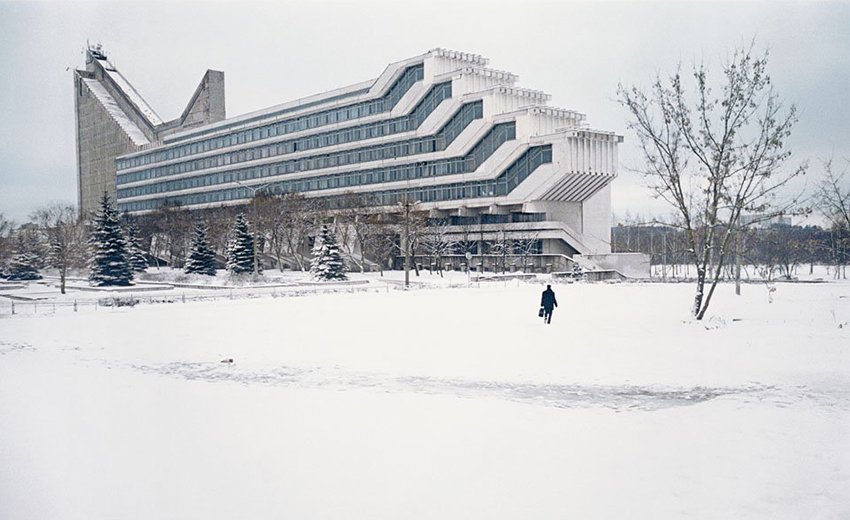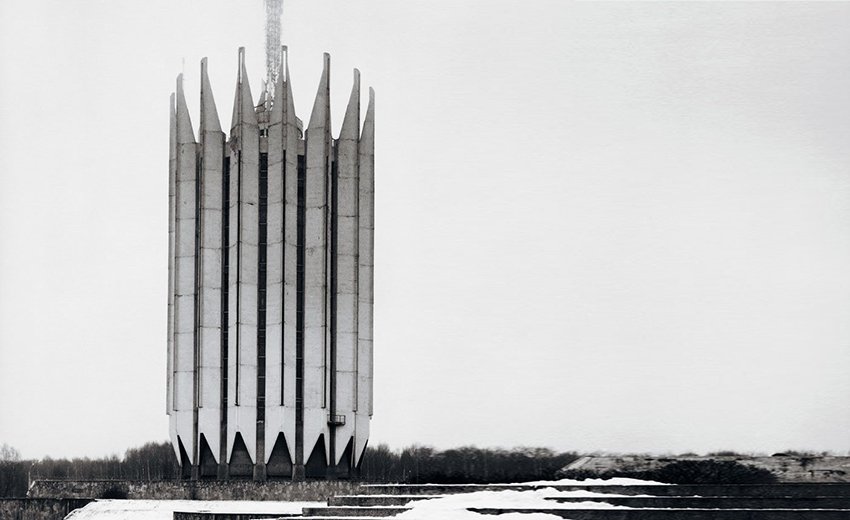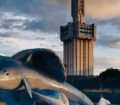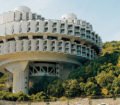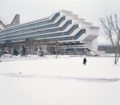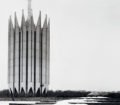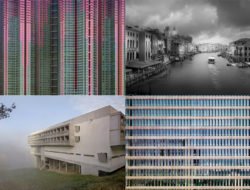From 1970 to 1990, some amazing constructions appeared in the USSR. A book testifies to these “Utopian monsters” erected before and during Perestroïka. Grandeur and decadence.
Between the very first Tintin story “in the land of the Soviets” in 1930 and Frédéric Chaubin’s project started in 2003, the former USSR had seen a lot of changes. For seven years the photographer let himself be guided, his eye fixed on his lens, wherever his journeying took him in the fifteen former Soviet republics. With intuition his only driving force.
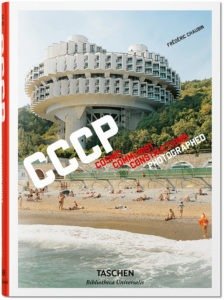
Frédéric Chaubin CCCP taschen.jpg
In this rich visual journey, compiled in the magnificent work “Cosmic Communist Constructions Photographed” (published by Taschen), Frédéric Chaubin catalogues 90 buildings emancipated from any kind of style. On his pilgrimages, the photographer leads us through fourteen old Soviet republics. They are all brimming with mammoths that defy the imagination: sanatoriums, “Wedding Palaces”, crematoriums, technological institutes, Lenin Museum of Tashkent, Tbilissi Ministry of Motorways … A host of little-known testimonies to the fourth era of Soviet architecture.
The beginning of the end
Between 1970 and 1990, a far cry from the avant-garde of the 20s and 30s and from Stalinian neoclassicism, the constructions financed by the State in the USSR reveal an unexpected renaissance of the imagination. In deployments of technical prowess, they stir the fantasies of the century: universalistic Utopias, a looking backward science fiction, the conquest of space, regionalist exoticism. This period expresses a sort of chaotic rush provoked by the decline of the system, like a host of ghosts and flying saucers announcing the dissolution of the Soviet Union in 1991.
The monsters of before Perestroika most often flourished at the edges of the empire: Baltic, Caucasus, Central Asia. Some of these colossi, often stranded in the middle of nowhere, have been destroyed or abandoned. Here and there, however, especially in the Baltic countries, these strange vestiges are starting to be appropriated as heritage. And today, up and coming architects are viewing some of these creatures as a source of inspiration. Just like the futuristic visions of one Frank Lloyd Wright.
CCCP, by Frédéric Chaubin, published by Taschen, 448 pages, €14.99
Tags: CCCP, Frédéric Chaubin, photography, Soviet architecture, USSR

































